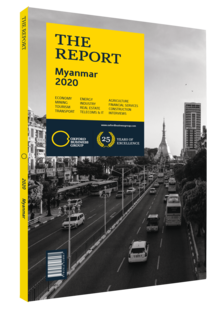Linus Goh, Head of Global Commercial Banking and Executive Vice-President, Oversea-Chinese Banking Corporation: Interview

Interview: Linus Goh
How do you assess the strength of Myanmar’s banking regulatory framework?
LINUS GOH: In the past couple of years the Central Bank of Myanmar (CBM) has strengthened the governance standards for the domestic banking sector. These changes are appropriate and in line with global standards. That said, the market remains a frontier one, and is at an early stage in its development. The pace of enforcement is as important as a developed regulatory framework. It is difficult to imagine that the newly implemented standards will be met immediately. A balance must hence be struck between establishing standards and creating a feasible route to compliance, one that mitigates any unintended consequences.
The sector is at a crossroads today. Much of the promises that Myanmar offers cannot be realised without a functioning banking sector. An overemphasis on governance can risk disrupting the operating environment without improving the availability of finance. The CBM has shown that reform will take place at an appropriate pace, which is a positive sign.
Which areas do you think will require foreign cooperation with local businesses?
GOH: The domestic corporate and small and medium-sized enterprise sector will represent significant business opportunities, but not immediately. A significant shift is taking place in the economy towards infrastructure and manufacturing development. This will require know-how and capital – two things that foreign actors can bring. There have been good examples of this in the past decade, with strong relationships built between local and foreign entities, but foreign players still operate with a narrow mandate, focused largely on foreign direct investment. Foreign banks have been permitted to work with local corporations, but this is done overwhelmingly in conjunction with foreign entities. The challenge for foreign banks is to partner with local players and help drive growth. It would not be feasible for either one to go at it alone. Domestic banks do not have the capability to undertake the long-term projects, structured financing and capital markets transactions that are needed to fund these projects. At the same time, foreign banks venturing into areas outside of Yangon require a deep relationship with trusted parties.
What is attractive about Myanmar, and what role can Singapore firms play in Myanmar finance?
GOH: One should not expect a frontier market to move in a straight line. The savvier corporate players know that strong foundations do not always translate to strong growth – gentle pace and prudent project selection are often the wiser solution. In Singapore many players work within aspects of the value chains that are already in place, but Myanmar is a market of contrast. On the one hand, we have obvious challenges that come with a frontier market, such as low banking penetration rates. On the other hand, in a space where there should be an equally low penetration rate in technology, we have seen rapid development in that area, with QR codes and fast-payments expanding quickly. For many firms, this creates an opportunity to move quicker than in developed markets. However, the challenge for banks is the ability to play the long game while adapting to the quick shifts inherent to the market.
Singapore is a well-developed centre for an array of financial services, with a long history of trade and investment in the region. The country has an affinity for Myanmar due to an aligned value, legal and tax system. As a small market, Singaporean businesses have to focus on the region, and many of our firms have the capacity to play a role in infrastructure development. In addition, Singapore is a launch pad for many foreign firms seeking a foothold in the region. In this sense, the collective track record that we have built provides a great base from which to grow.
You have reached the limit of premium articles you can view for free.
Choose from the options below to purchase print or digital editions of our Reports. You can also purchase a website subscription giving you unlimited access to all of our Reports online for 12 months.
If you have already purchased this Report or have a website subscription, please login to continue.

